
Crtd 12-05-27 Lastedit 14-08-20
For long the phenomenon of the Flying Dutchman has been regarded as a myth. Twenty years ago, however, we acquired old documents suggesting that on their long distance trade ships the Dutch in the 17th century were employing a pretty big size of of kites ("vliegers" in Dutch) with extremely long lines. We have experimentally veryfied this propulsion procedure in the past decades, were sometimes seen and inspired artists and film makers, but their results were not always convincing...

...total rubbish...
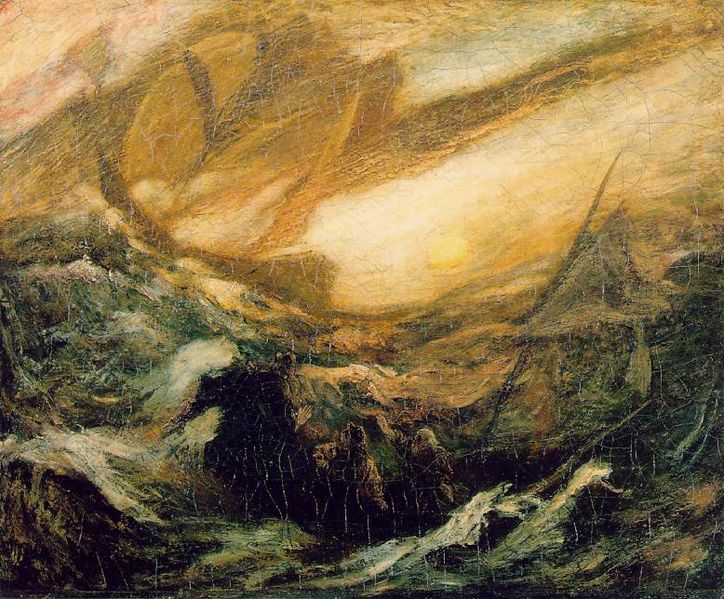
...This is already more like the real thing...

...Another pityful failure to come anywhere near something like the real thing, no way a real sailor would think of painting this...

Our design, keel
length 940 cm
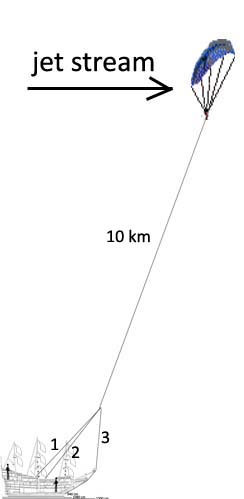
The polar jet stream is formed by the deflection of upper air winds by coriolis acceleration. It resembles a stream of water moving west to east and has an altitude of about 10 kilometers. Its air flow is intensified by the strong temperature and pressure gradient that develops when cold air from the poles meets warm air from the tropics. Wind velocity is highest in the core of the polar jet stream where speeds can be as high as 300 kilometers per hour. The jet stream core is surrounded by slower moving air that has an average velocity of 130 kilometers per hour in winter and 65 kilometers per hour in summer.
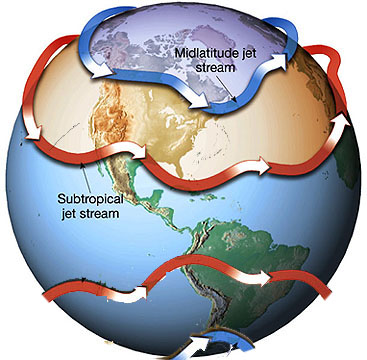
The subtropical jet stream is located approximately 13 kilometers above the subtropical high pressure zone. The reason for its formation is similar to the polar jet stream. However, the subtropical jet stream is weaker. Its slower wind speeds are the result of a weaker latitudinal temperature and pressure gradient.
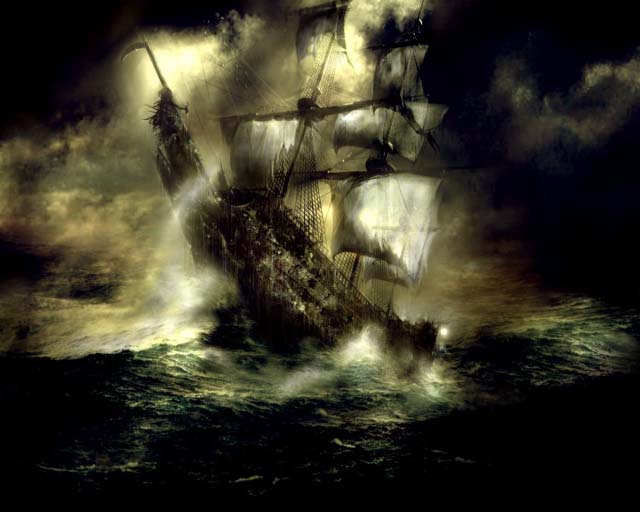
...this is a good painting, but it was us who at that moment were not sailing very well: this artist is inspired by seeing us in one of our first test trips while a bit late to slacken the bow towline (line 3 above) after the parasail reached the jet stream and started pulling and lifting full force. By consequence the bow is lifted sharply and you will not start planing and acquiring speed ...
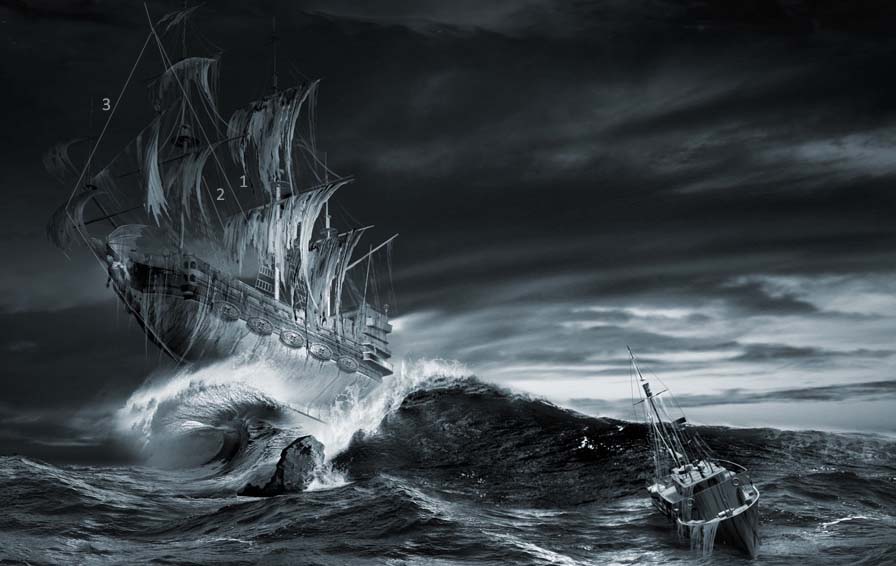
...an excellent picture of the maximum speed trim when parasail has duely reached jet stream. This artist must really have seen us: he has actually painted our three steering towlines (1,2 and 3) until the point where they come together at the main parasail tow line, which is painted as well!...
Disadvantages of the system:
1. one can only follow the jetstream, so there is no way to use it Westward. This explains why the 17th Century Dutch were often so quick in Indonesia, and why it took them so much time to get back.
2. We used remote electric control of the parasail flaps and we have no clue how the 17th century Dutch prevented their kites ("vliegers") from lurching.
3. While our experiments showed that shallows and sandbanks form no problem as long as the parasail is firmly in the jetstream, small islands, rocks and vessels form a great danger, and it is difficult to see what the 17th Century Dutch did to avoid them.